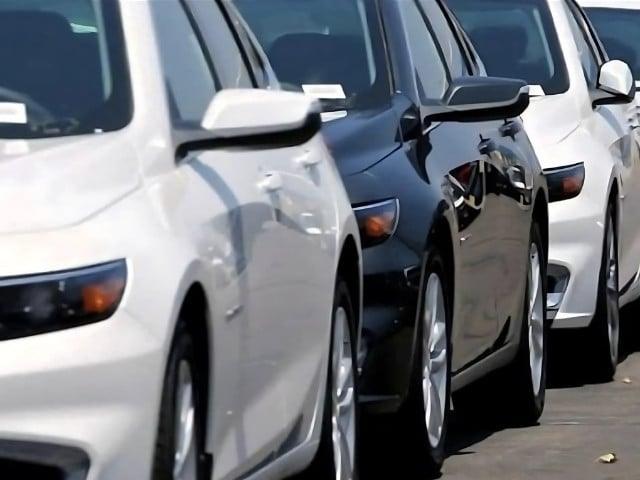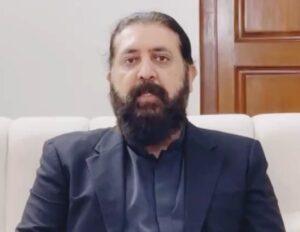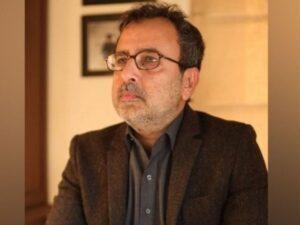The president of the All Pakistan Motor Dealers Association (APMDA), Haji Muhammad Shehzad, expects the next federal budget to offer major relief for used car buyers, including reduced import rights and an increase in the age limit for cars of second -year to three years to five years.
Speak exclusively at NewsShehzad said this decision is provided for Pakistan’s commitments under its agreement with the International Monetary Fund (IMF), in which the country has agreed to gradually facilitate restrictions on car imports.
He said Pakistan assured the IMF to reduce heavy rights and used cars taxes over the next five years. These reductions will come from the lower sales tax or revised customs duties, according to Shehzad.
Currently, total rights over imported vehicles vary from 96% to 475%, but these will be gradually reduced by 20% per year over the next five years, he explained.
Read more: the IMF Gifle 11 new conditions on Pakistan
Price fees, followed by an increase in the age limit of second -year -old cars at five, compared to three years, can slow down sales of locally manufactured vehicles.
Used cars arriving in various diets will make even more establishments, as prices discounts on new and used vehicles will lower the prices of these vehicles.
The president of the APMDA also said that the authorization to import five -year cars, in particular on a commercial basis, could considerably reduce the prices of vehicles.
He noted that a five -year -old Japanese car costs almost half a three -year model.
For example, if a three -year -old vehicle is at $ 8,000, a five -year equivalent could be purchased for $ 3,500 to $ 4,000. This could result in a drop in prices of 500,000 rupees to Rs 1 million.
Shehzad said that if the proposed changes passed, the price of small cars could fall up to 1 million rupees.
He said the cheapest locally assembled car was currently at the price of Rs 3.1 million, while a comparable model in a neighboring country costs only 375,000 rupees.
“Even after adjusting the exchange rate, this car would cost around 1.3 million rupees here,” he said. With reduced tasks and a relaxed age limit, he added that better quality Japanese cars could be made available to Pakistani buyers for less than 2 million rupees.
He also declared that if the government fully adheres to IMF conditions, car imports used during the next fiscal year could reach 70,000 to 80,000 units, compared to 30,000 current. This increase could also considerably increase government revenues by 70%, he said.
According to Shehzad, the proposed reforms would not only make cars more affordable for the public, but would also dispute the monopoly of local assemblers.
This could push them to improve quality and to evolve towards large -scale manufacturing. “There was no real location in Pakistan. We are still counting on CKD kits.
If the competition is introduced, local assemblers will be forced to improve. The abolition of tasks and the softening of age limits to imports will stimulate market competition and will ultimately strengthen the local automotive industry, “he said.
Shehzad concluded by saying that if the IMF proposals are incorporated into the budget, this could prove to be a major and positive step for the automotive sector of Pakistan, the public and the government.
“People will have access to affordable and high quality vehicles, the government will generate income and local assemblers will have to go to international standards.”
As discussions on structural reforms in the automotive sector in Pakistan, the main stakeholders in the industry have weighed on the proposed policy changes linked to the broader economic recommendations of the IMF and the next national prices for 2025-30 prices.
Consultant in the automotive sector Shafiq Ahmed Shaikh considers the growing IMF interest in the automotive industry as a positive development, noting that he could help provide long -term solutions to the challenges of the sector.
“This is a sensitive point, which must be discussed with the automotive industry and other stakeholders for long-term and acceptable solutions,” he said. “As we know, electric vehicles (electric vehicles) are the future, which will mainly come from China, it is therefore the right time that lasting and long -term long -term incentives and long -term for electric vehicles and their accessories are introduced for better investments and more jobs.”
Read more: Govt unveils major pricing reforms
Paapam differs when approaching
On the other hand, Shehryar Qadir, Vice-President Director of Pakistan Association of Automotive Parts and Accessories Manufacturers (PAAPAM) and Executive Director at Jin Kwang Jaz Limited, expressed serious concerns concerning the reports according to which the government could reduce advanced tasks on fully constructed units (CBUS) at 15% and (CKD) 2025-30.
Read more: Automotive parts manufacturers describe a new pricing policy
Although the proposal is positioned as a structural reform to stimulate growth led by exports and achieve the objectives of liberalization of IMF, criticism – including the Paapam – were able to lead to deindustrialization and to undermine decades of local investment in the automotive industry.
Shehryar warned that such a decision would seriously weaken the competitiveness of domestic parts manufacturers, potentially pushing them outside their market.
A similar concern has been taken up by Mashood Ali Khan, highlighting the risks for the competitiveness of local parts manufacturers.
Meanwhile, the CEO of the Indus Motor Ali Asghar Jamali also called for the revision of the financing limit of RS3 million to 70% of the retail price of a vehicle and extending the financing mandate from three to seven years.
It is good to encourage Pakistanis abroad to buy locally manufactured vehicles by offering tax exemptions and rights, provided that payments are made through currency accounts. This will help to keep demand from the imports of used cars.
He underlined the need to offer tax switches and rights to vehicle exporters to ensure competitive international prices.
In addition, it is necessary to sign free trade agreements and preferential trade agreements to improve global competitiveness and market accessibility for Pakistani vehicles.
Regarding used cars, importing these cars should be limited because it has a negative impact on economic growth, promotes tax evasion and feeds the gray market. Pakistan has an annual manufacturing capacity of 500,000 passenger vehicles, 76% of which are underused.
It is urgent to maintain an appropriate tariff difference between completely eliminated units (CKD) and completely accumulated units (CBU) to encourage local assembly, promote job creation and support economic growth.
The government is expected to develop a coherent and stable political framework for the automotive sector to ensure long -term growth and avoid frequent changes in policy.
This includes the formulation of a global policy to promote the creation of local industries for essential raw materials such as steel, resin, aluminum and copper, which are essential components for high -value goods.
For example, India’s steel policy has enabled it to become a net exporter of steel.
Jamali pleaded to rationalize the tax structure of locally manufactured vehicles to create a level playground with imported used cars.
He also called to adjust the depreciation rate of used cars imported from 1% to 0.5% to improve government tax revenue.
Last week, stakeholders in the automotive industry met a special assistant from the Prime Minister of Industries, Haroon Akhtar Khan, to discuss the concerns related to prices.
Although car manufacturers have engaged in previous policies to fully locate the production of car parts thanks to a 100%suppression program, progress has been slow, most of the parts are still imported.
Read more: automotive parts manufacturers fear that development
Haroon assured participants that industry concerns, in particular with regard to the customs duties proposed at 15%, would be officially picked up with the pricing policy committee.
He underlined the government’s commitment to support the national industries and ordered the Paapam to subject a complete analysis describing the level of pricing protection required to ensure competitiveness and sustainability.
He reiterated the position of Prime Minister Shahbaz Sharif that industries demonstrating increased productivity would be eligible for incentives, aimed at stimulating growth and performance within the sector.
While recognizing the concerns of manufacturers of automotive parts, Haroon encouraged them to place their confidence in the management of the Prime Minister, ensuring that their interests would be firmly represented.
PAAPAM was also invited to provide concise follow -up reports before the next meeting to maintain the momentum and ensure continuous dialogue on tariffs.




